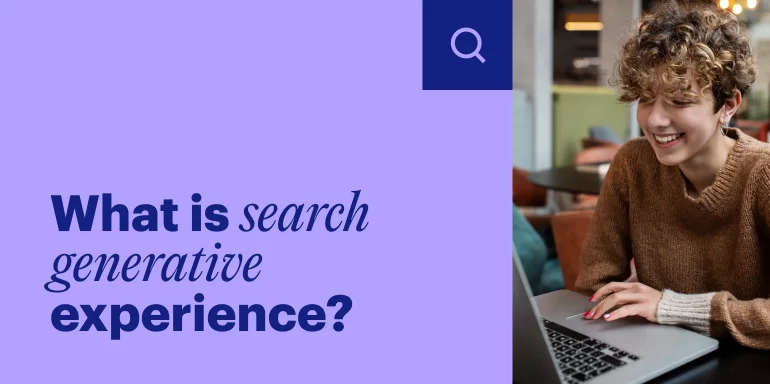The past year has been transformative for AI in almost all aspects of marketing and tech—from data analysis to image creation and content generation. AI marketing has become an integral part of the daily workflows of advertising and marketing teams.
Search was the next step.
Google’s Search Generative Experience (SGE) is the platform’s upgraded search landscape. Unlike traditional SERP results, SGE uses generative AI in search
to give users quick and clear overviews of their search queries—so they don’t have to click on individual website links.
SGE is Google’s way of optimizing the search results for a perfect user experience, however, as of now, SGE is an experiment (it only operates in 120 countries and in seven languages), it doesn’t work for all search queries, and you need to opt in to see it.
How does Google SGE work?
Google’s generative AI search uses a variety of AI powered technologies for information retrieval, such as natural language processing and large language models, machine learning, and deep learning, to understand a user’s search query, process relevant content, and formulate an appropriate response.
Users can also ask follow-up questions with SGE based on the answers that are generated and get product recommendations.
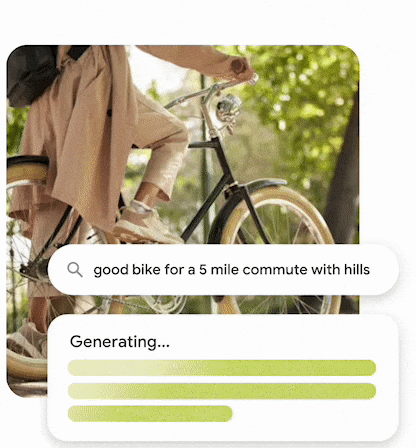
Using the Search Generative Experience helps users get:
- Quick and already formulated answers to questions
- Access to overviews they don’t need to sift through
- Summarized key takeaways
- Clear instructions on how to perform tasks
While SGE completely customizes and streamlines users’ search experience, it also changes the way SERP results are shown, making advertisers and marketers wary of how to run ads and rank their content on the search engine.
Will Google Generative AI for search results change the SERP landscape?
There’s a lot of speculation about how AI powered search will change everything for content marketers, SEO professionals, and searchers everywhere. The new generative AI experience is expected to lead to a more conversational and potentially voice-search-dominant experience.
Another big change with SGE is that the tech automatically creates a position 0 for search results page with its quick summary option:
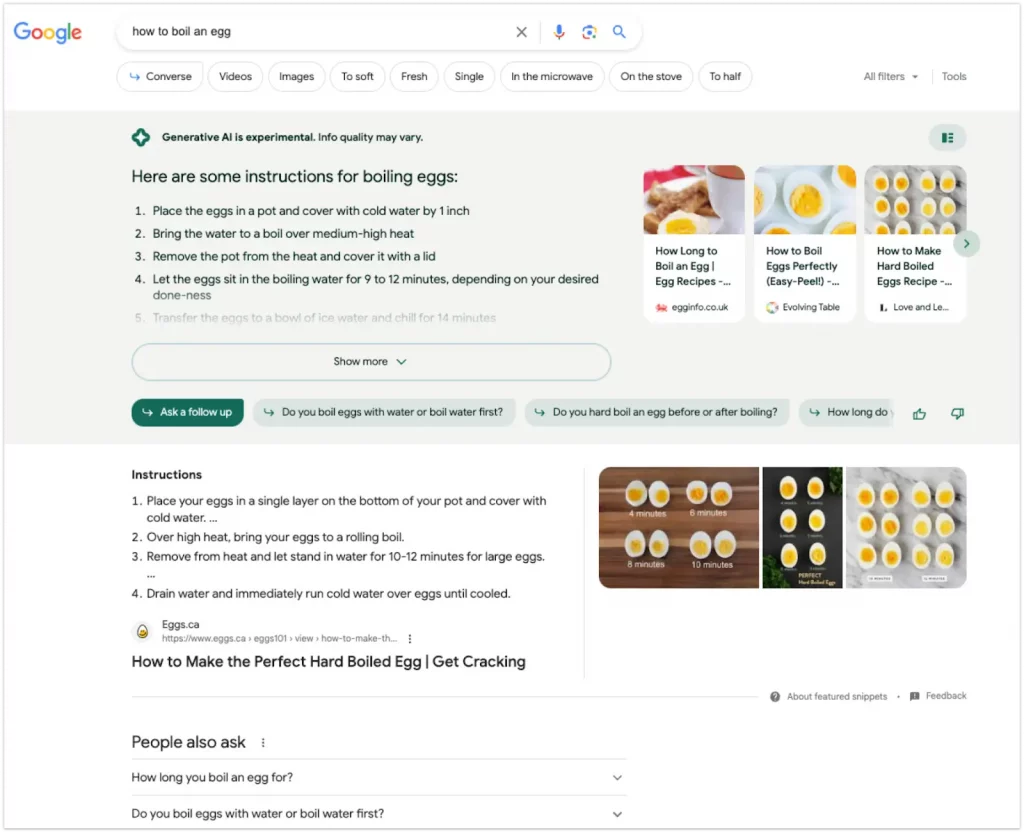
While users can see links appearing on the left side, it’s highly unlikely they will click one of these links if they get everything they’re looking for from the summary.
Plus, the follow-up question options serve the purpose of improving search results by allowing users to satisfy further queries in a more casual, non-search way without going down the SERP rabbit hole.
What does this mean for advertisers and marketers? Yes, SGE could potentially lead to a decrease in organic search traffic. However, it also means if your content is personalized, relevant, and user-centric, you will still win visibility in the new design.
You can also use the AI-generated responses as a roadmap to create more fine tuned and targeted ad campaigns that align with user intent and drive higher engagement rates.
With the new search landscape, Keyword research will evolve into a dynamic, feed-based approach, moving away from heavily relying on specific keywords. One of the best ways to create the type of high-quality content Google prioritizes is to use reputable sources, share expert opinions, and ensure any information you feature is accurate.
You must also understand and address search intent before narrowing down keywords and writing content. There are four main types of search intent you need to consider:
- Navigational intent: Users looking for a specific page
- Informational intent: Users who want to learn about something
- Commercial intent: Users who are conducting research before making a purchase decision
- Transactional intent: Users who want to complete a specific action, typically a purchase
How will Google search generative experience impact PPC?
Google search ads in the SGE landscape look different. They are more visual and more descriptive.

And it’s not just the ads that have gotten a facelift. The new generative search experience will result in switching to conversational mode and lead to the creation of interactive ad copy, which will require marketers to adapt their messaging to better fit the new search experience. PPC ads will also see the following changes:
- Visual focus: SGE places a higher visual focus on ads, with more image extensions. This requires advertisers to ensure their ad creative is visually engaging and optimized for the generative environment.
- Keyword intent: Ads for more transactional-based searches will be highlighted. This means that ads will be more likely to appear for searches with clear commercial intent, potentially leading to higher engagement and conversion rates.
- Ad placements: Generative AI in search will change the placement of ads, with only two ad positions appearing above organic or AI sections instead of the traditional four. This will lead to more competitive auctions for ad placements.
- Ad format testing: Google is testing new ad formats within the SGE, such as the “You May Also Like” feature, which presents a carousel of products alongside AI-generated responses. This testing is ongoing, and the impact on ad performance and costs is still being evaluated.
- Increased ad space: Ads will take up more space within the SGE, potentially leading to higher click-through rates and increased competition for ad placements. This will require advertisers to adapt their strategies to ensure their ads stand out in the SGE environment.
Difference between Google SGE and other tools
Google SGE vs. Perplexity AI
Perplexity AI is a generative search engine that uses advanced AI and natural language processing (NLP) technologies to give users an ad-free search experience.
Perplexity AI gives users comprehensive responses, synthesizes information from diverse sources, and offers an in-depth understanding of complex subjects and follow-up options.
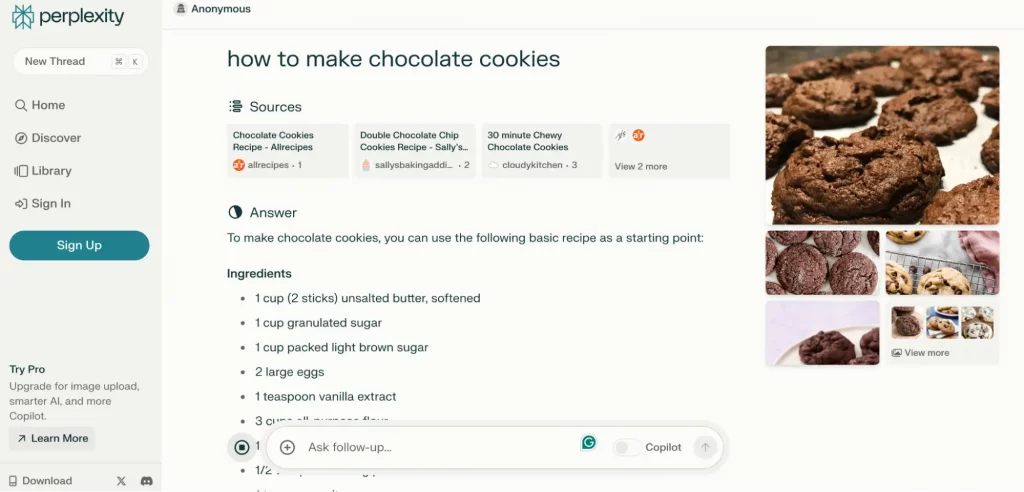
While SGE does generate answers to search queries in a similar fashion, it also includes ads and is still in the experimentation phase, so it’s not accessible to everyone.
Google SGE vs. Bing
Bing was the first in the race to create a generative search experience, but Google SGE is still winning in several aspects.
Bing adds a dense answer box with numbered source links, while Google’s SGE takes up the whole page and doesn’t include any links inside the text. Here’s an example comparing the two:
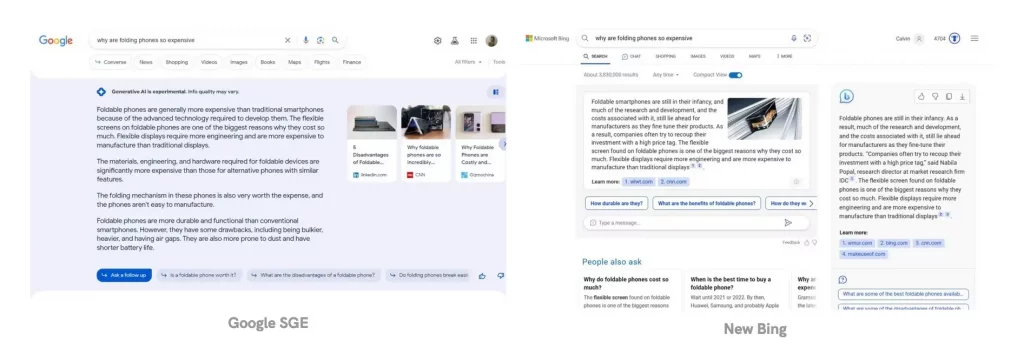
Bing’s approach to displaying its AI answer along the right-hand side of the page allows users to get to the actual search results faster than with SGE.
If you scroll up or expand the AI-powered answer, you can ask Google follow-up questions while Bing presents users with Chat mode.
What are the Google SGE challenges?
Geographic and language limitations
Google SGE is available in seven languages and over 120 countries. But it is yet to launch in Europe. Google plans to gradually expand its generative AI search experience to more countries in a way that is consistent with local regulations and their AI principles.
Potential for inaccuracy
As SGE is still in the early stages of development, like other language models, it can sometimes produce incorrect information. Google SGE also displays a disclaimer, “Generative AI is experimental. Info quality may vary,” for precisely this purpose.
Lack of transparency
Google’s PaLM 2 is a closed model, which doesn’t reveal much about its decision-making process—the lack of transparency clashes with users’ desire to understand how AI arrives at a particular conclusion.
Can Google Search Generative AI create images within the search engine?
Google’s Search Generative Experience allows users to generate images directly from the search bar based on a text prompt. The images produced with SGE based on search terms have metadata labeling and embedded watermarking to indicate that they are AI-generated.

This new capability has the potential to significantly impact the way images are created and used in various applications. The image creation feature is part of Google’s efforts to bring state-of-the-art image-generative AI capabilities to application developers.
SGE takes personalization one step further
Google SGE’s AI powered answers are changing things for SEOs, advertisers, and marketers everywhere. To stay on top of things, it is essential to put personalization and user-centricity at the heart of all your campaigns.
This is especially true for ads and landing pages.
With Instpage, you can dynamically deliver personalized, conversion-optimized landing page experiences to every audience. See the power of personalization in action by signing up for the 14-day free trial today.

Try the world's most advanced landing page platform with a risk-free trial.
